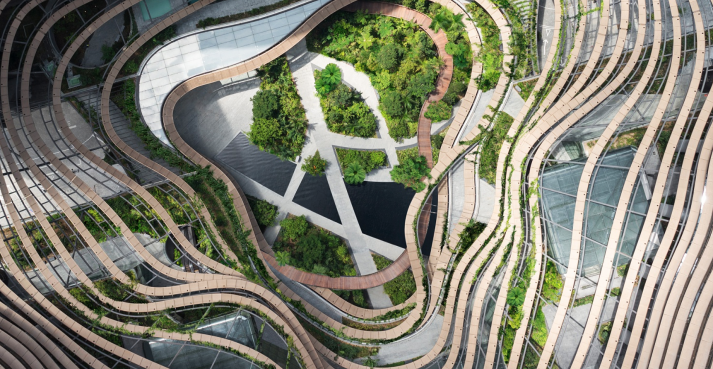Not known Details About Landscape Design
Landscape Design for Beginners
Table of ContentsLandscape Design - The FactsFacts About Landscape Design RevealedSome Known Questions About Landscape Design.Landscape Design Can Be Fun For AnyoneIndicators on Landscape Design You Should Know
A yard can typically be divided into three locations: public (the front backyard), personal (the back yard), and solution (normally the side lawn). The place of task areas depends mainly on the type of area, the dimension of room needed, the kind of task, and the desired distance to various other activities and structures.The outside wall of the residence often acts as the very first wall surface or beginning point of an outdoor room. Incompatible usages should be divided, and relevant activities, such as cooking and eating, must be assembled to make the backyard extra reliable and delightful. When making use of hardscape to develop rooms, make use of construction product similar to that used in your home for connection from your house right into the yard.
Connected rooms. Credit Rating: Gail Hansen, UF/IFAS Using similar hardscape features and repeating plants pulls the eye around the garden. Important points in the process can be emphasized with growings or attributes that attract interest and encourage motion in a particular direction. Moving along the course takes an individual from one location to the following and permits the individual to have a range of experiences.
Landscape Design - The Facts

For emotional convenience plants are made use of as physical or implied obstacles for privacy and security. Physical barriers block both the sight and accessibility to an area and include fencings, walls and plant bushes. Suggested obstacles, typically reduced expanding plants, obstruct access but not the sight (Figure 9). Various other features of plants include cleaning up the air, preventing disintegration and soil loss, preserving moisture in the dirt, and returning raw material to the dirt.
Physical and indicated obstacles. Credit: Gail Hansen, UF/IFAS For these factors, the sorts of plants to be made use of (such as trees, bushes, or groundcovers) should be selected in the onset of planning (Landscape Design). Plant kinds are selected for their useful capacities so that their future purpose and required space can be thought about at the same time

The 9-Minute Rule for Landscape Design
Each plant mass is in front of, behind, or alongside, another mass. Figure 11. Straight plant layers. Credit Scores: Gail Hansen, UF/IFAS Figure 12. Vertical plant layers. Landscape Design. Credit: Gail Hansen, UF/IFAS Repeating plants within a mass and duplicating masses with comparable plants ties the garden with each other. The specific plant qualities need to be considered to efficiently click over here layer and mass plants.
All plant make-ups begin with the main structure plants, the big, mostly evergreen history plants-such as the trees and big bushes. These plants different or enframe areas, regulate the size of the area, and supply the beginning point for choosing the ideal qualities of the 2nd layer, midground plants, for massing and infill.
Crucial factors in the garden need to be highlighted by the use unique plants, unique frameworks, or garden ornaments. Noting thresholds or entryways to rooms can be see this made with gates, arbors, and actions, or through the use of unique and colorful plants. The form and/or design motif of the garden will certainly frequently aid identify the important points and exactly how they should be highlighted.
Various other crucial locations in the yard are prime focus, which is made use of to visually arrange a designed location. The kind of centerpiece usually depends on the seeing point of view. Different perspectives or perspectives can reveal different make-ups in the landscape that may require a selection of focal points. Contrasting appearance, form, size and shade will certainly catch and hold the eye.
Landscape Design Things To Know Before You Get This

Number 13. Plant kinds. Credit: Gail Hansen, UF/IFAS After kind, texture is the next leading function of a plant; crude, tool and fine textures can be utilized for comparison and focus in the landscape. Kind and texture both trump shade in the yard for the majority of the year. During particular seasons, color will certainly be Related Site the most obvious characteristic of the yard.
The pleasurable aroma of plants, the noise of wind in the trees, the sound and structure of water, and the colors and structures of sculptures, pots and garden furnishings all include to the experience of the garden. One information that is commonly ignored is the impact of light on the visual appeals of the plants.

Excitement About Landscape Design
It is necessary to know the eventual fully grown size of plants so they can be placed in the right area and spaced appropriately when they are installed. Providing plants room to expand is an obstacle since the common mature size is normally based on optimum growing conditions and the environmental conditions of a website might cause a plant to enlarge or stay smaller.